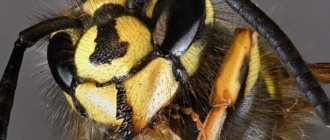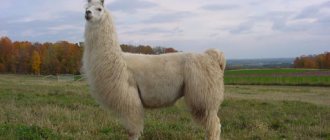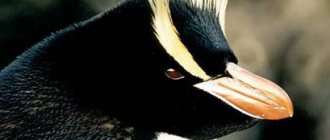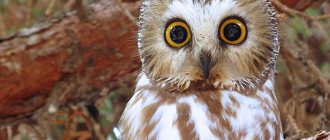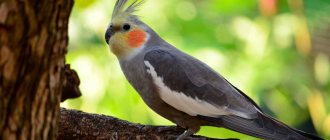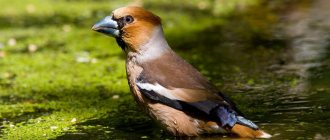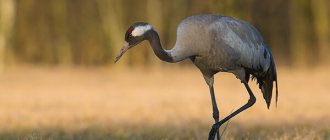Fans of exotic birds especially appreciate the small, cute Corella parrot with a crest on its head. It is known to breeders as a “nymph”. The delicate beauty, humility, and intelligence of the fragile bird allowed her to take a place among the most popular pets. The article describes the features of the Australian parrot: habitat, lifestyle, reproduction, habits. The details of appearance are considered and the main colors are listed.
A little history of the species
The homeland of cockatiels is Australia. Animalist and ornithologist John Gould undertook a zoological expedition to the mainland in 1838–1840. He took out about eight hundred birds and seventy animals. Upon returning to Great Britain, the scientist systematized his works, the result of which was the book “Birds of Australia”. In the part dedicated to parrots, the ornithologist tells everything about cockatiels: their lifestyle, appearance.
Europe first saw cockatiels in the forties of the nineteenth century. From Paris, the birds, through the efforts of private breeders, spread throughout the European part of Eurasia. After 1960, Australia introduced a ban on the export of parrots outside the country. Further breeding and selection took place without the participation of wild representatives.
Pearl
This color is also called “pearl” and does not in any way affect the colors already present in the cockatiel’s plumage. However, this mutation gene affects the distribution of color throughout the parrot's body: it reduces the distribution of the gene responsible for gray color, while increasing the yellowness gene.
On some feathers, the pearl mutation gene produces a jagged, yellow pearl pattern. In some birds the pattern is clearly visible, in others light and dark colors smoothly flow into each other, erasing the clear boundary between them.
You can identify a pearl-colored cockatiel chick when its first feathers begin to open. Their colors alternate, making the baby appear spotted.
Where does the cockatiel live in the wild?
The natural range of nymphs is the central part of Australia. They are rarely found near the ocean; they are suitable for spacious plateaus, grassy plains, and thickets of bushes near rivers. Parrots of this species prefer to breed in tree hollows, and when the chicks grow up, the flock flies from place to place. Nomadic life is important during dry periods, as food and water become increasingly scarce. In a community, it is easier for birds to find food and escape from predators.
Singing
Both in natural and at home conditions, the cockatiel sings very melodiously, accurately repeating the sounds it hears. Nymphs easily copy the sounds of alarm clocks, household appliances and other pets. But teaching them to talk is a little more difficult. To do this, you need to show self-control and patience.
Male cockatiels sing especially beautifully during the mating season. At this point, it is easiest to teach the cockatiel to repeat sounds, as well as melodies. To do this, you should hum or whistle simple songs several times a day.
Appearance
Cockatiels are small parrots, similar in size to young pigeons. Characteristic features of the species:
- body length 16 – 18 cm;
- tail length 12 – 15 cm;
- wing 15 -17 cm;
- body weight 90 – 150 g.
The feathers on the wings and tail are long and pointed. The paws are weak, the toes are thin, but their structure allows them to run quickly through the grass and tenaciously hold onto branches. Like all parrots, cockatiels have a strong beak, with which they playfully crack nuts and chew twigs. The cere is gray, the iris is brown.
On a note! The nymph's decoration is a narrow forelock on the head, with the help of which the bird expresses its mood. The crest distinguishes the cockatiel from other parrots, but also gives some resemblance to cockatoos, so for a long time they were considered relatives.
After conducting research, scientists found out everything about cockatiels and came to the conclusion: this is a separate species.
Description
— Advertising —
The genus of macaws is a large-bodied feathered bird from the parrot family, which is characterized by brightly colored plumage from blue to red. It is worth noting that the classification of Macaw parrots is largely based on color.
Of the common characteristics that stand out among all representatives of the genus, the first is a large rounded beak with a steep tip, which is compressed on both sides. Ornithologists say that the beak of this animal is the strongest on earth.
— Advertising —
The second common characteristic is bare patches of skin around the eyes and cheeks on the face. Short colored feathers are located in such bare places, but not all types of macaws have them. Third, the wings of Macaw parrots become very elongated towards the end. The tail is bright and wedge-shaped. You can clearly see the above characteristics in the photo of the macaw parrot.
Colors
Chicks and young individuals cannot boast of stable feather color; only after the first moult do parrots get their characteristic color. In the period from eight to twelve months, the nymph gradually replaces its feathers with permanent ones. The color of the bird directly depends on how the chick was bred: from the species of real cockatiels or as a result of crossing different subspecies.
Natural shades of feathers
Cockatiels need the natural color scheme of their plumage for camouflage, which is why free birds are so simply colored. The most common natural color is gray feathers and a yellowish head with orange spots on the cheeks. The outer surface of the wings is brown with white patches, the tips are black. The belly is light gray. The crest has the same color as on the main part of the head.
Differences between male and female
Cockatiels of different sexes differ from each other in some nuances of coloring and physique. Males are more expressive than females: boys have bright olive-colored feathers, their crest and head are sunny yellow. The cheeks are marked with round reddish spots. There are white mirrors on the wings. The flight and tail feathers have a bluish sheen.
Girls are a little lighter, even duller in appearance than boys. The lower part of the body is red, the yellow color of the crest is diluted with an admixture of gray feathers. The head is dirty yellow, the spots on the cheeks are brick brown. The inner side of the flight feathers is marked with yellow specks, the tail is marked with transverse black stripes. Typically, females have a wider tail than males.
Other color options
Gray (natural) color is not the only color for cockatiels. Breeders, by crossing birds carrying different genes, developed other species:
- Lyutino. Males and females are the same, their feathers are yellow, their cheeks are orange, and their eyes are red.
- Cinnamon. The plumage tone ranges from dark brown to coffee. In males the head is yellow, in females and chicks it is the same color as the body.
- Pearl, also called “pearl.” The feathers on the wings are yellow-white with black inclusions. There are pearl pearls: gray corella, lutino, cinnamon.
- Albino. White parrot with red eyes.
- Motley. The color of the feathers is uneven, there are bright circles on the cheeks.
- White-faced (no cheeks). The color can be anything except lutino. There are no spots on the cheeks.
Within each subgroup there can be combinations, depending on the dominant or recessive gene: white-faced variegated pearl barley, yellow-cheeked variegated pearl barley, pastel silver, steam variegated pearl barley.
Albino
If you cross two parrots, one of which has the lutino gene, which blocks the dark color, and the other has the white-faced gene, which blocks the yellow color, then there is a high probability of producing an albino cockatiel. In principle, an albino is a white-faced lutino. Albino parrots have red eyes that darken over time to a dark cherry color.
Lifestyle of a Corella parrot
Wild parrots live in large flocks and often fly along the banks of water bodies. They feed on seeds, grains, nuts, grass and fruits. Their manner of drinking water is interesting: in flight they grab a few sips from the surface of the river. Corellas are energetic - parrots do not sit in one place for a long time, they are constantly on the move: they fly a lot, move quickly on the ground, and climb tree trunks.
Parrots love to rest on the tops of old eucalyptus trees - the gray color of their feathers helps them camouflage against the background of dried branches. From above, curious birds watch what is happening around them.
This is interesting! Having noticed people, cockatiels easily allow them to approach them. Because of their gullibility, birds often fall into the hands of hunters: the meat of these parrots is edible.
Domesticated nymphs easily adapt to a new place of residence. They do not need special conditions. For a good quality of life, you need to provide your parrot with proper care:
- a spacious cage with all the necessary equipment;
- balanced food, clean water;
- healthy microclimate;
- regular cleaning;
- possibility of flying around the apartment;
- safety;
- daily communication;
- interaction with other birds;
- treatment.
A healthy, well-fed cockatiel that is surrounded by comfort will sing cheerfully and enjoy learning.
Video “How to choose a budgie”
Many parents don't want to have cats or dogs because of care issues. Therefore, as an alternative, wavy birds or other small birds are chosen. This video explains what to look for when choosing budgies.
Was this article helpful?
Thank you for your opinion!
The article was useful. Please share the information with your friends.
Yes
No
X
Please write what is wrong and leave recommendations on the article
Cancel reply
Rate the benefit of the article: Rate the author ( 2 votes, average: 5.00 out of 5)
Discuss the article:
Reproduction
In nature, the nesting cycles of the cockatiel depend on the rainy season. This is due to the fact that it is easier to raise chicks when there is an abundance of water. All species of cockatiels breed twice a year: the first clutch is usually incubated in the fall, the second in mid-winter. The female lays five to seven eggs, which are incubated alternately with the male for 21 to 23 days. The parents feed the hatched chicks until they are approximately two months old, then the older generation leaves the nest. Having rested, the couple begins a new laying.
Corella parrot chick
A married pair of tame parrots can reproduce freely if favorable conditions are created:
- closer to autumn (or spring, if this time of year is chosen), you should start feeding the birds with a special vitamin mixture;
- add sprouted grains and calcium to food;
- gradually increase daylight hours to 16 hours;
- You need to prepare a nest box (house) in the cage.
Individuals must be at least two years old and not older than six years old. Inbreeding is undesirable, otherwise you may end up with defective, sick chicks with defects.
Cockatoo
A good imitator is Cockatoo, grows up to 60 cm, has a strong curved beak, which can damage wooden objects, even thin cage bars.
Life of a cockatoo up to 40 years.
The difference is a large crest of white, yellow or pink color. When excited, the bird will fluff up its crest.
Its homeland is Australia, Indonesia, New Guinea. There are 21 species of these birds.
Kakadu's memory is rather weak, it can remember up to 10 words and 2-3 phrases, but it can perform tricks. But he will imitate the sounds he hears.
A devoted bird cannot stand being alone for a long time; for example, an owner’s business trip can cause her great stress. They may refuse to eat or drink or pluck their feathers.
It is imperative to teach from an early age that if there are small children in the house, it is better to choose another parrot. He doesn't like children and can be aggressive. If you accidentally offend, he bites painfully and takes revenge. He understands only affection and persuasion.
Intelligence and habits
Among breeders, the Corella parrot is famous for its good nature; they say about it: “affectionate, like a house cat.” They are smart, easy to tame and train, and can learn several dozen human words. True, these birds do not have outstanding vocal abilities: you should not expect clear pronunciation from them. The nymph is able to imitate animals and imitate the noise of operating equipment. In a state of highest pleasure, the parrot sings, whistles in every way, and goes through words from its stock.
Important: Often, a talkative cockatiel with its harsh voice arouses hostility among others. A frightened or angry bird makes very unpleasant, ear-piercing sounds.
The character of a cockatiel is a variable value. A change in behavior may be due to the introduction of a new bird, illness, or the awakening of the sexual instinct. Do not give in to the reciprocal desire to intimidate, shout, or push the bird away. Only with patience and affection can you regain her trust.
When getting a cockatiel, be prepared for the fact that it needs to be raised. An adult that remembers the previous owner has difficulty getting used to its new habitat. The established character and habits of such a parrot cannot be corrected. If you take home a three-month-old chick, it is quite easy to raise an obedient and intelligent pet from it. You just need to work with him from the first day, once the adaptation process is over. A mischievous nymph who trusts her owner is most willing to talk and perform tricks.
The demand for cute parrots is not decreasing - they captivate with their gentle appearance, flexible mind, and calm temperament. It is easy to achieve reciprocity from them if you show goodwill and surround them with care and attention. The best living conditions will help the bird become a full member of the family.
general information
This bird species is not considered large. Since their length does not reach even twenty centimeters. At the same time, the weight fluctuates around fifty grams. However, despite such modest dimensions, these tomboys are real fidgets.
Sometimes it seems that budgies can talk non-stop for days on end. Taking a break just to have a snack. The name itself - budgerigar - was assigned to the bird for a reason.
If we translate the name of the bird from the Latin Metopsittacus undulatus, it turns out that it is a singing budgie. Moreover, by waves we mean a peculiar pattern on the bird’s back. It vaguely resembles waves, which was the reason for assigning such an unusual name to this species of birds.
